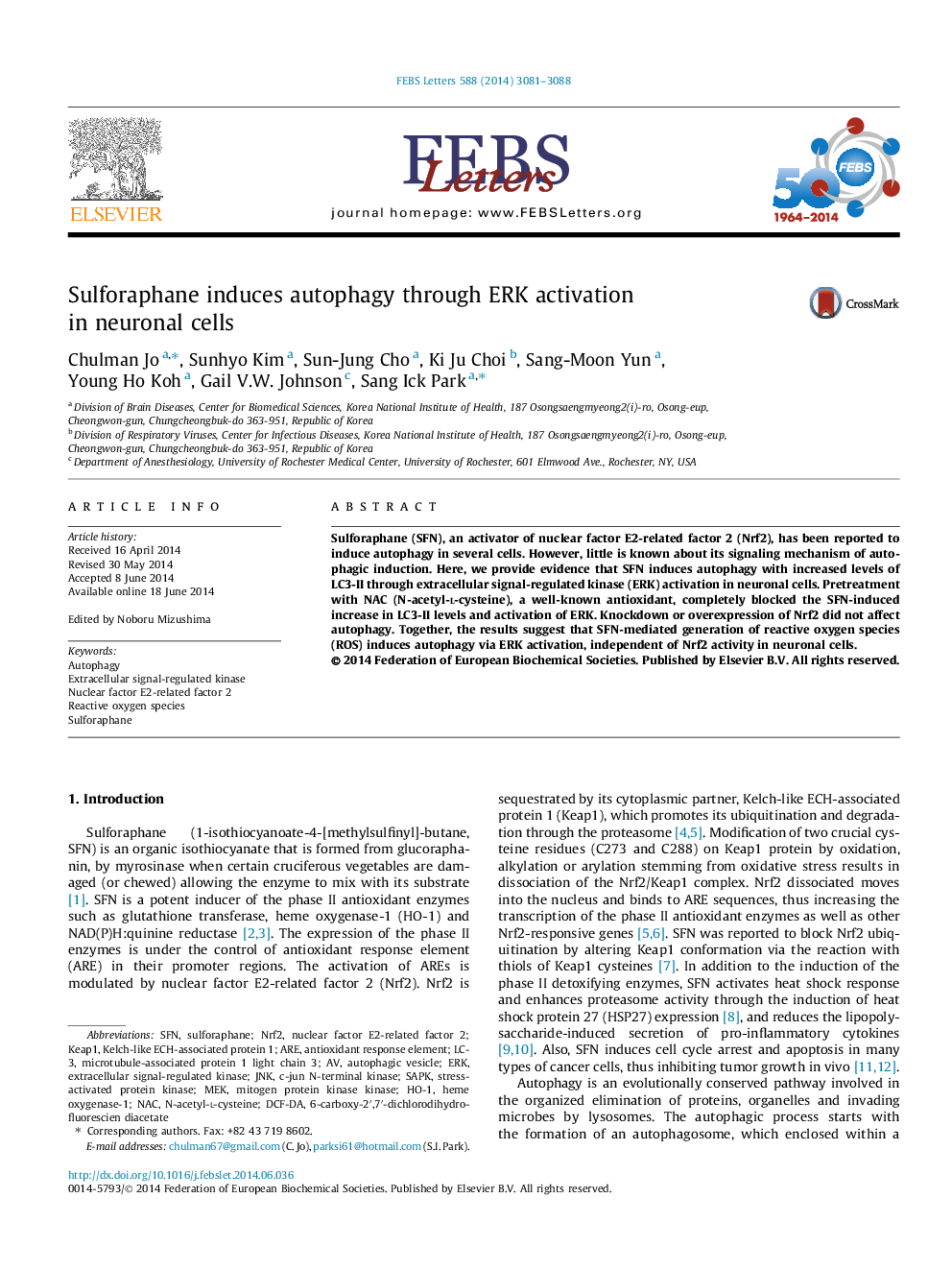| Article ID | Journal | Published Year | Pages | File Type |
|---|---|---|---|---|
| 10870178 | FEBS Letters | 2014 | 8 Pages |
Abstract
Sulforaphane (SFN), an activator of nuclear factor E2-related factor 2 (Nrf2), has been reported to induce autophagy in several cells. However, little is known about its signaling mechanism of autophagic induction. Here, we provide evidence that SFN induces autophagy with increased levels of LC3-II through extracellular signal-regulated kinase (ERK) activation in neuronal cells. Pretreatment with NAC (N-acetyl-l-cysteine), a well-known antioxidant, completely blocked the SFN-induced increase in LC3-II levels and activation of ERK. Knockdown or overexpression of Nrf2 did not affect autophagy. Together, the results suggest that SFN-mediated generation of reactive oxygen species (ROS) induces autophagy via ERK activation, independent of Nrf2 activity in neuronal cells.
Keywords
JnkLC-3SAPKHeme oxygenase-1DCF-DAN-acetyl-l-cysteineSFNERKHO-1NACNrf2keap1c-Jun N-terminal kinaseAutophagySulforaphanenuclear factor E2-related factor 2antioxidant response elementMEKAREKelch-like ECH-associated protein 1microtubule-associated protein 1 light chain 3Stress-activated protein kinaseextracellular signal-regulated kinaseReactive oxygen species
Related Topics
Life Sciences
Agricultural and Biological Sciences
Plant Science
Authors
Chulman Jo, Sunhyo Kim, Sun-Jung Cho, Ki Ju Choi, Sang-Moon Yun, Young Ho Koh, Gail V.W. Johnson, Sang Ick Park,
